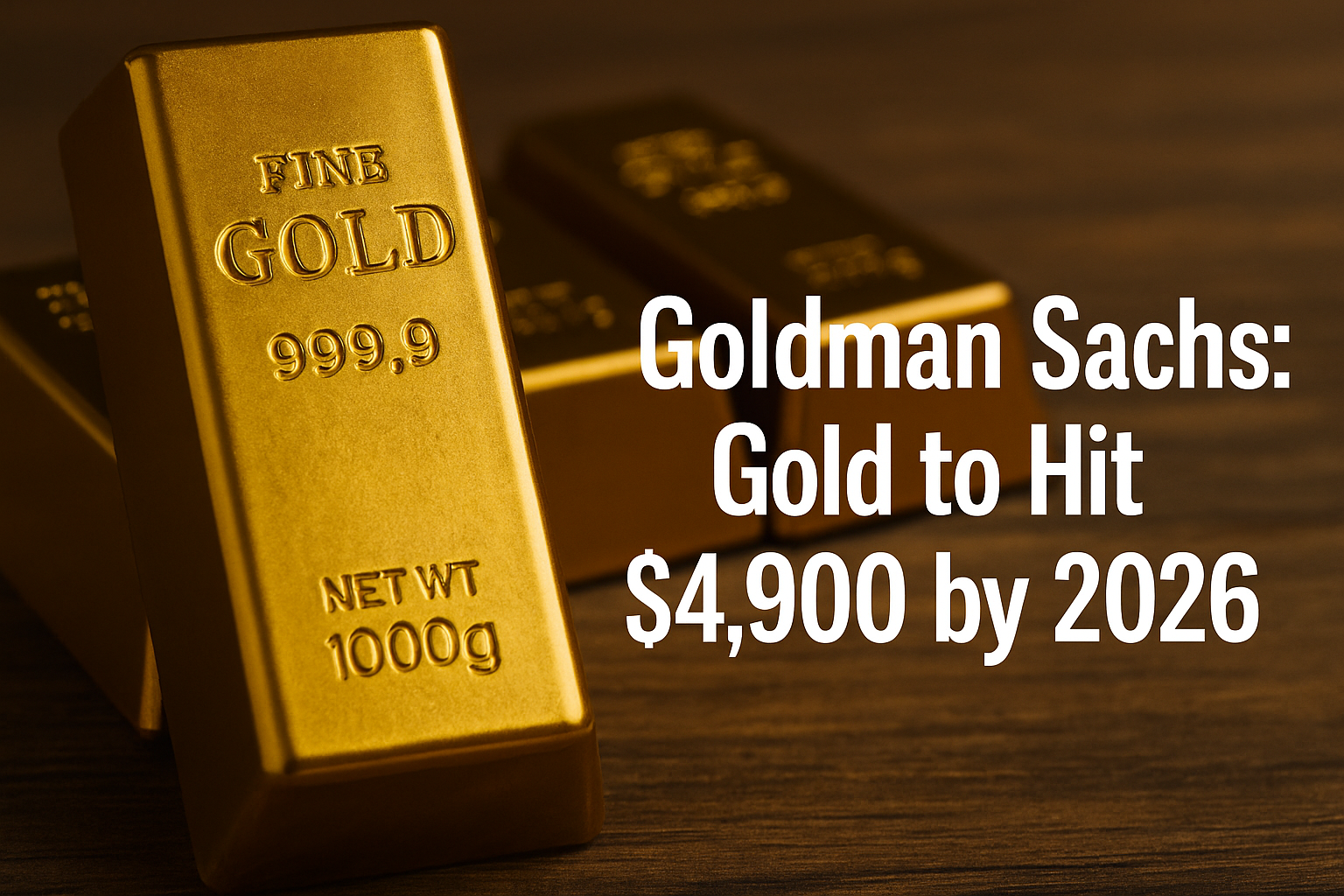Announcement: Lorem ipsum dolor sit amet, consectetur adipiscing elit. Donec et quam blandit odio sodales pharetra.
Can gold prices get to $4,900/oz as predicted by Goldman Sachs?
As investors continue to be divided about the future price of gold, Goldman Sachs, in its latest note has pegged gold prices at $4,900/oz by end of 2026. That is a massive 22% upside in just over a year.

Table of Content
Momentum in the gold story
Momentum is a rather strange thing in prices. Gold took the whole of history up to 2009 to touch $1,000/oz for the first time. By early 2020 it touched $2,000/oz and by year 2022 was ensconced above that level. Gold touched $3,000/oz only in March 2025, but scaled to $4,000/oz by October 2025. The last $1,000 move in gold prices has come in just about 7 months. However, now Goldman Sachs is pegging that spot gold would touch the level of $4,900/oz by the end of 2026. If past experience is any guide, it could be higher, and it could also be quicker.
Why Goldman is bullish on gold
Goldman has been bullish on gold since late last year. In fact, gold has already rallied over 53% since the start of 2025. Goldman Sachs expects a combination of factors like the prolonged US shutdown, sustained inflows into gold ETFs, buying momentum from central banks, lower interest rates, and de-dollarization trend to boost demand for gold further. These are the reasons why Goldman expects gold to rally by another 22% in the next one year and, perhaps, emerge once again as the best performing asset class of 2026 too. We have to wait and watch!
More fundamental concerns
However, the real concerns around dollar asset classes began around 2022, when the Russia Ukraine war started. That was the time, the US had imposed sanctions on Russia and also frozen most of their dollar assets. This led to panic among a lot of central banks as they feared that the US could use dollar assets as a lever. To avoid that eventuality, most central banks globally started moving central bank reserves from foreign currencies to gold. This led to the first big demand cycle for gold. It was not only China and India; but several other such emerging markets also preferred to hold reserves in gold than in dollars. This overhang is likely to remain for a fairly long time.
What should investors do?
Should investors really enhance their exposure to gold? While some amount of opportunistic buying in gold is OK, it must not disrupt one’s financial plan and asset allocation in any way. Remember, the idea of keeping an exposure of 10% to 15% in gold is as a hedge against bad times. That is the role gold has played in the last 1 year when equities gave you negative returns. The best that investors can do is to reset the weightages of gold between 10% and 15%; not beyond that at any cost. Investors have to be wary of the recency bias in gold. In the past, gold has been stagnant or downward trending for very long periods. Let the current lure of gold not blind your asset allocation!
Comments